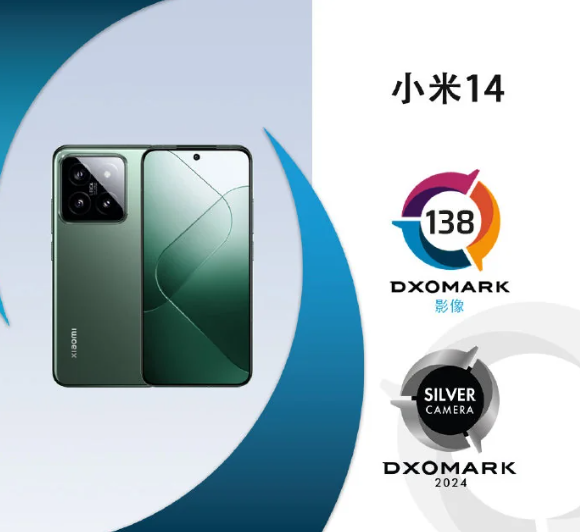Home >Technology peripherals >It Industry >The imaging screen performance of Xiaomi Mi 14 was evaluated by DXOMARK. It is rich in details but still has room for improvement.
The imaging screen performance of Xiaomi Mi 14 was evaluated by DXOMARK. It is rich in details but still has room for improvement.
- PHPzforward
- 2024-03-06 12:43:10727browse
According to the latest data released by DXOMARK, Xiaomi Mi 14 performed well in the latest image and screen tests. In terms of imaging, Xiaomi Mi 14 received a total score of 138 points, ranking 28th in the DXOMARK imaging rankings. In the screen test, Xiaomi Mi 14 scored 133 points, ranking 53rd in the DXOMARK screen rankings. This shows that Xiaomi Mi 14 has satisfactory performance in terms of image and screen performance.


DXOMARK gave positive comments on the image performance of Xiaomi Mi 14, believing that compared with the previous generation product Xiaomi Mi 13, the image quality has improved Significant improvement. In most test scenarios, Xiaomi Mi 14 can capture rich details and maintain low noise levels. Its neutral white balance makes landscape photos particularly effective. In addition, Xiaomi Mi 14 also performs well in zoom performance, providing clear and detailed images in telephoto mode. In terms of video, Xiaomi Mi 14 has a wide dynamic range, accurate exposure, and proper processing of details and textures, bringing users a high-quality video experience.
However, DXOMARK also pointed out some shortcomings in the imaging of Xiaomi Mi 14. When shooting portraits outdoors, facial contrast under strong light and backlight conditions is low, and overexposure sometimes occurs. When shooting sports scenes, artifacts may appear, affecting the natural feel of the photo. In terms of video, although autofocus performance has been improved, it may still perform unstable in panning scenes. In addition, in low-light environments, the video imaging noise of Xiaomi Mi 14 is relatively obvious, and the rendering of portrait skin tone also needs to be improved.

In terms of screen, DXOMARK believes that the screen of Xiaomi Mi 14 can provide users with an excellent experience in various usage scenarios. The screen has high smoothness, whether browsing the web or playing games. In low-light environments, the screen brightness is properly adjusted and the color performance is excellent. Nonetheless, Xiaomi Mi 14 still has room for improvement in screen flicker management. Although the device has an anti-flicker feature, there is still a certain degree of flickering in the default mode. In addition, although Xiaomi claims that the peak brightness of the device can reach 3,000 nits, DXOMARK engineers found in tests that when watching HDR video content, its maximum brightness can only reach 2,740 nits, which may result in poor performance when watching HDR10 videos. Problems with insufficient brightness and lack of detail in dark areas.
According to the editor’s understanding, although Xiaomi Mi 14 has made certain progress in camera and display, there are still some areas that need improvement. Xiaomi may optimize and improve these issues in future product updates to provide users with a better experience.
The above is the detailed content of The imaging screen performance of Xiaomi Mi 14 was evaluated by DXOMARK. It is rich in details but still has room for improvement.. For more information, please follow other related articles on the PHP Chinese website!

